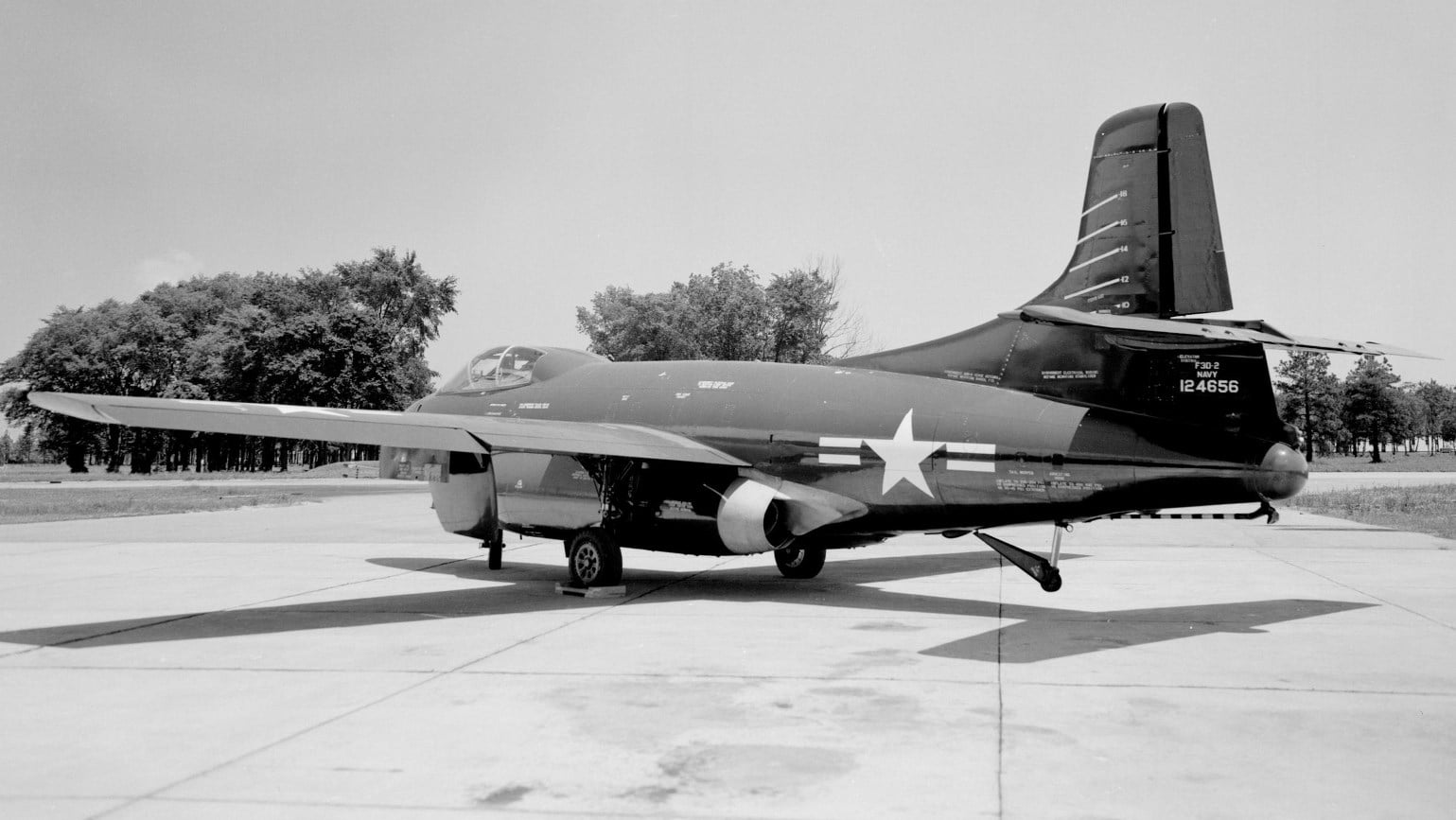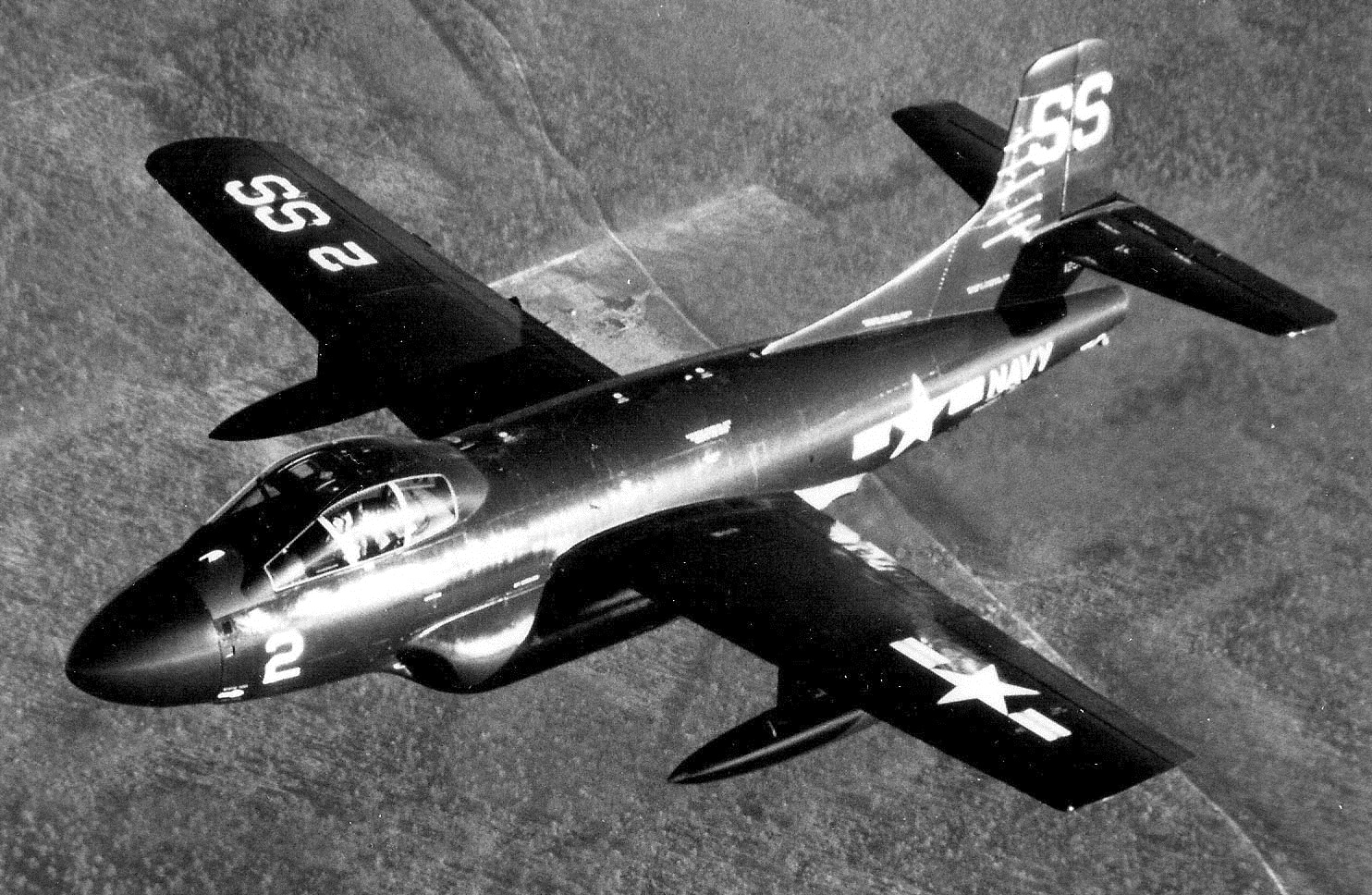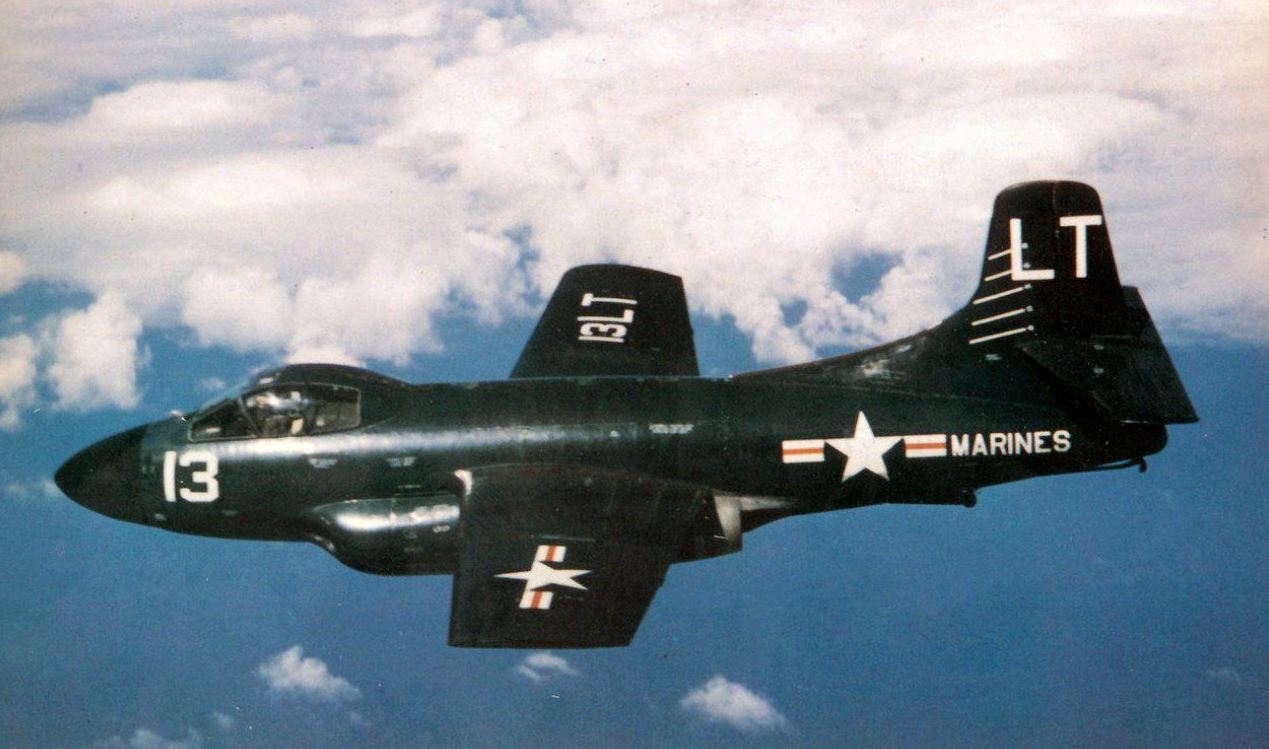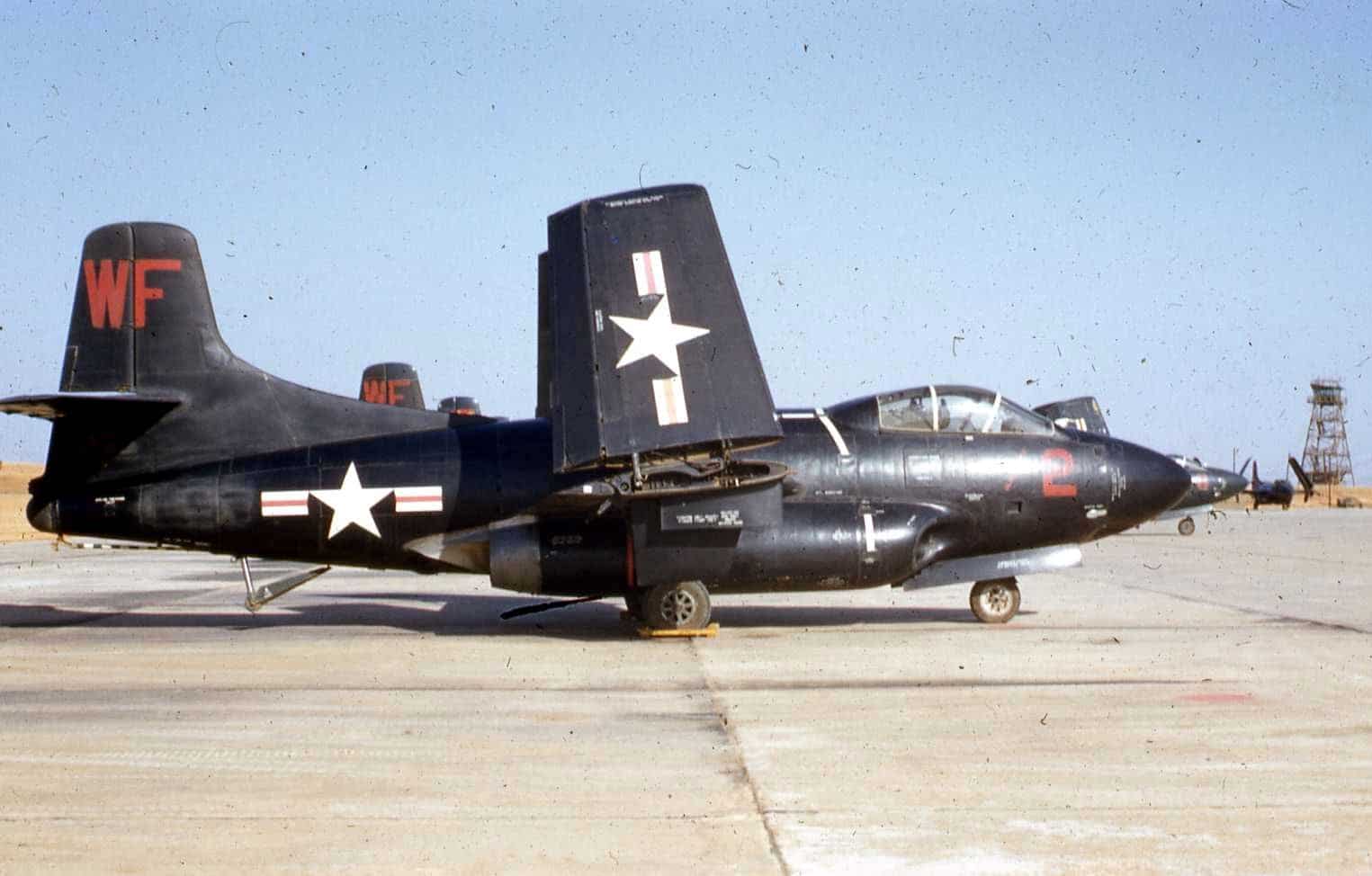Douglas Built This Versatile Airframe to Work and Work it Surely Did
On March 23rd 1948, Douglas test pilot Russell Thaw took off in the prototype XF3D-1 Skyknight for the first time. The first purpose-designed and built jet-powered night fighter, the Skyknight was successful in that role during the Korean War, achieving a 6:1 kill ratio over the North Korean opposition. The Skyknight would go on to a 20 year service life in several roles for the United States Navy and Marine Corps.

One Huge and Heavy “Fighter”
The Skyknight began as Douglas’ design to fill a 1945 Navy Bureau of Aeronautics (BuAer) requirement for a jet-powered and radar equipped, carrier-based night fighter. Ed Heinemann and his Douglas team designed the aircraft around the large air intercept radar systems in use at the time with side-by-side seating for the pilot and radar operator. The aircraft’s fuselage was wide and deep with twin underslung engines.

Built to Fulfill a Specific Mission
Douglas interpreted the BuAer requirement for the Skyknight literally. This would be no dogfighter. The Skyknight would function exactly as required by the Navy. With its straight wings and large control surfaces it would be both a stable gun and radar platform, providing radar performance unseen in any previous night fighter design. The somewhat portly jet was quickly dubbed “Willie the Whale.”

Building a Better Skyknight
After the first flight of the prototype, testing continued through 1948. The first production Skyknight flew on February 13th 1950. Jet engines being as evolutionary as they were at the time, the Skyknight saw several changes to its engines, resulting in incremental performance improvements, during its early development which begat two distinct variants: The F3D-1 and the F3D-2 with improved engines. The Westinghouse AN/APQ-35 was the fire control system in both F3D variants. It in turn consisted of three vacuum-tube technology main components- a search radar, a tracking radar, and a tail-warning radar.

They Got Theirs at Night
The initial F3D-1 aircraft were used primarily to train F3D crews and did not see combat in the Korean War. In September of 1952, the Marines began flying 12 of the F3D-2s in Korea. Skyknights shot down a total of six enemy aircraft- the record for any naval aircraft type in the war. When the United States Air Force found they required night fighter escorts for their B-29 Superfortresses flying night bombing raids, the Marine Skyknights of VMF(N)-513 Flying Nightmares filled the role. When in early 1953 their numbers increased to 24 in-theater, the Marine F3D-2s were even more effective as B-29 escorts.

